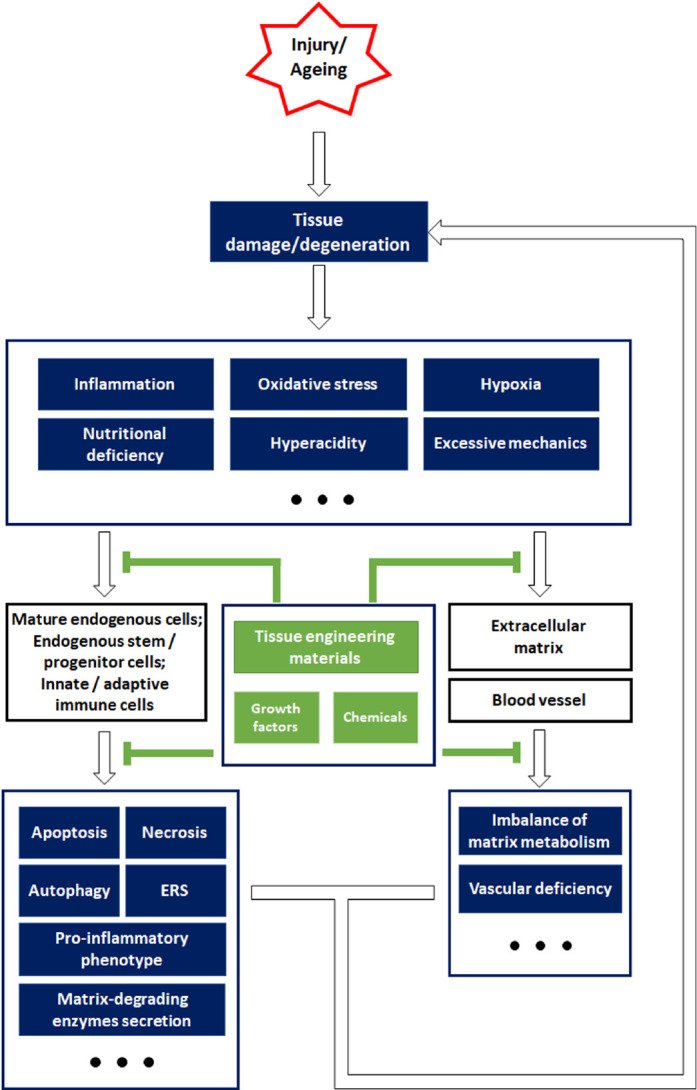Figure 2. Schematic overview of the strategies for constructing biomaterials, inspired by endogenous repair failure that occurs owing to injury or ageing-related pathophysiological changes. Aberrant external impacts cause tissue damage, while ageing often leads to tissue degeneration. After tissue damage or degeneration, the resulting unfavourable microenvironment is characterized by inflammation, oxidative stress, hypoxia, insufficient nutrition, hyperacidity, and abnormal mechanical properties, which impose a great burden on the endogenous cells and non-cellular components. Specifically, mature endogenous cells and stem/progenitor cells typically suffer from cell death and endoplasmic reticulum stress (ERS), and secrete pro-inflammatory factors (interleukin 1β, interleukin 6, tumour necrosis factor α, etc.), while immune cells are also involved in aggravating the inflammation. In addition, the harsh environment also leads to an imbalance in the matrix metabolism and impairs the endothelial cells that are essential for angiogenesis. Cellular and non-cellular alterations in unfavourable environments contribute to endogenous repair failure. However, tissue engineering materials and other bioactive agents are efficient in relieving the pathological changes and their damaging impact on cells and extracellular components, which may help re-establish endogenous repair mechanisms and alleviate tissue damage or degeneration.

